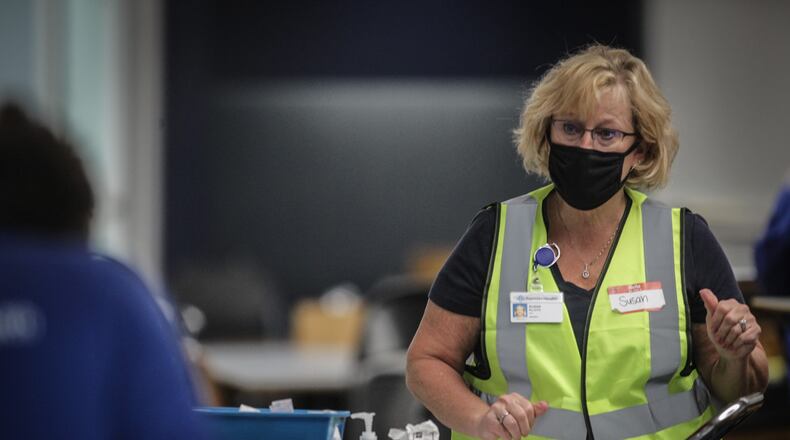Looking at preliminary data from June 20 to July 3, Ohio is expected to see another substantial increase in the delta variant and it could likely more than double the 15% reported in the previous two-week period, Vanderhoff said.
“Delta is moving rapidly to replace B117 or the alpha variant as our dominant form of COVID-19,” he said.
While the delta variant is transmitted the same way as other COVID variants, the difference is it take less of the virus to potentially infect someone, Andrew Thomas, chief clinical officer of the Ohio State University Wexner Medical Center, said.
Vanderhoff added that the delta variant is 50% more contagious than the alpha variant, which is 50% more contagious than the strain that caused Ohio’s winter surge.
Studies also indicate that the delta variant is more likely to result in an unvaccinated person to be hospitalized than other variants.
“The reality is we now have two Ohios,” Vanderhoff said. “An Ohio that is protected and vaccinated on one hand and an Ohio that is unvaccinated and vulnerable to delta on the other.”
Thomas added that since April, about 90% of COVID hospitalizations in the central Ohio region were unvaccinated patients. Of the remaining 10%, most had additional medical conditions, such as cancer.
Vanderhoff and Thomas both stressed the importance of getting vaccinated, noting that all three vaccines approved in the U.S., Johnson & Johnson, Moderna and Pfizer, offer protection against the delta variant.
With fall approaching, Vanderhoff said time is of the essence to get vaccinated to make sure you’re fully vaccinated before cooler weather hits Ohio.
“When there are more people who are vaccinated, there are fewer of us that can carry the virus,” he said.
Fall also signals a return to school. Currently, there are no vaccines available for children 11 and younger.
Vanderhoff said the state is continuing to recommend those who are unvaccinated to wear face masks and social distance.
“We were very successful with that here in Ohio in our schools this past winter,” he said. “I think the good experience is there for us to learn from. We are continuing to encourage that people apply those lessons from our recent past.”
About the Author
